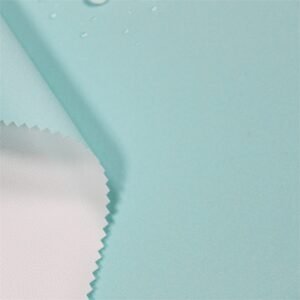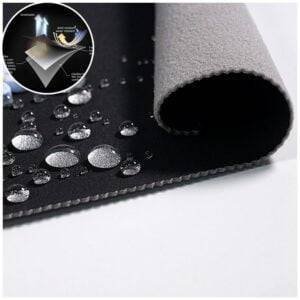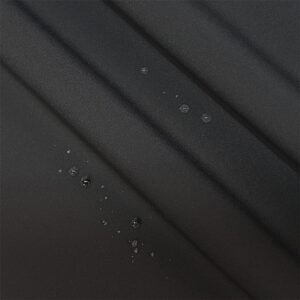Softshell fabric has become a popular choice for outdoor enthusiasts and everyday wear due to its unique combination of durability, comfort, and weather resistance. Unlike traditional hardshell fabrics, softshell fabric offers a more flexible and breathable alternative, making it ideal for a variety of garments such as jackets, pants, and other outdoor gear. However, selecting the right softshell fabric requires an understanding of its properties, construction, and intended use. This guide will help you make an informed decision when choosing softshell fabric.
Understanding Softshell Fabric
Softshell fabric is a versatile material that typically consists of two or three layers. The outer layer is usually made from a durable, abrasion-resistant material that provides protection against the elements. This layer is designed to wick moisture away from the body, ensuring that the wearer stays dry and comfortable. The inner layer, often made from fleece or other soft materials, provides insulation and warmth. In some cases, a microporous membrane may be sandwiched between these layers to enhance waterproofing and breathability.
Key Features to Consider(SIKOR-TEX:Soft Shell Fabric Suppliers)


Water Resistance Softshell Fabric
While softshell fabrics are generally résistant à l'eau, they are not fully imperméable. This makes them suitable for light rain or snow but not for heavy downpours. If you need a fabric that can withstand extreme weather conditions, you may want to consider a hardshell fabric instead.
Breathability Softshell Fabric
One of the standout features of softshell fabric is its respirabilité. The material allows moisture vapor to escape, preventing the buildup of sweat and keeping you comfortable during physical activities. Look for fabrics with high moisture-wicking capabilities for optimal performance.
Durabilité Softshell Fabric
Softshell fabrics are designed to be tough and resistant to abrasions, making them ideal for outdoor activities like hiking, climbing, or skiing. The outer layer should be able to withstand the wear and tear of regular use, including contact with backpack straps or rough surfaces.
Stretch and Flexibility Softshell Fabric
While most softshell fabrics are not highly élastique, some offer a degree of stretch in one direction to enhance mobility and comfort. This feature is particularly useful for garments that require a wide range of motion, such as climbing pants or athletic jackets.
Insulation Softshell Fabric
The level of warmth provided by a softshell fabric depends on the type of lining used. Some softshells feature a smooth, brushed knit lining for moderate insulation, while others use high-loft fleece for added warmth. Consider the climate and intended use when selecting the level of insulation.
Sewing and Construction Tips



When working with softshell fabric, it’s important to use the right techniques to maintain its performance characteristics. Here are some tips for sewing softshell garments:
Use Microtex Needles
These needles are designed for use with technical fabrics and will help prevent damage to the material.
Seam Sealing
To enhance water resistance, use imperméable tape on the seams. This will provide an extra layer of protection against moisture.
Lining
While softshell fabrics do not require a lining, adding one can improve comfort and warmth. Fleece is a popular choice for lining softshell jackets, but this is a matter of personal preference.
Applications of Softshell Fabric


Softshell fabric is highly versatile and can be used for a wide range of garments and accessories. Some common applications include:
Softshell Fabric For Jackets
Softshell jackets are perfect for transitional seasons or mild winter climates. They offer a balance of warmth, breathability, and water resistance, making them ideal for outdoor activities.
Softshell Fabric For Pants
Softshell pants provide flexibility and durability, making them suitable for hiking, climbing, or other activities that require a wide range of motion.
Softshell Fabric For Accessoires
Softshell fabric can also be used for gloves, hats, and other accessories that require a combination of warmth and weather resistance.
Conclusion
Choose softshell fabrics based on their waterproofness, respirabilité, durability, and insulation. Understanding their properties will help you choose the best material for your jacket, pants, or outdoor gear. With proper care, softshell garments are guaranteed to last.
Contactez-nous to customize softshell fabrics with different performance characteristics for your project.
-
 Fabricant de tissu Softshell haute visibilité
Fabricant de tissu Softshell haute visibilité -
 Tissu imperméable en TPU laminé polyester 75D T800
Tissu imperméable en TPU laminé polyester 75D T800 -
 Tissu imperméable de TPU stratifié par polyester 50D T800 pour la veste
Tissu imperméable de TPU stratifié par polyester 50D T800 pour la veste -
 Tissu softshell 3 couches camouflage extensible dans les quatre sens ePTFE
Tissu softshell 3 couches camouflage extensible dans les quatre sens ePTFE -
 Tissu respirant imperméable en PTFE laminé extensible 75D T800
Tissu respirant imperméable en PTFE laminé extensible 75D T800 -
 Tissu élastique en nylon et élasthanne 40D laminé ePTFE 3 couches
Tissu élastique en nylon et élasthanne 40D laminé ePTFE 3 couches
